The ‘Anne Frank’ road trip that transformed America
In 1958, the Pulitzer Prize-winning play sought out new audiences where Jewish stories were rare
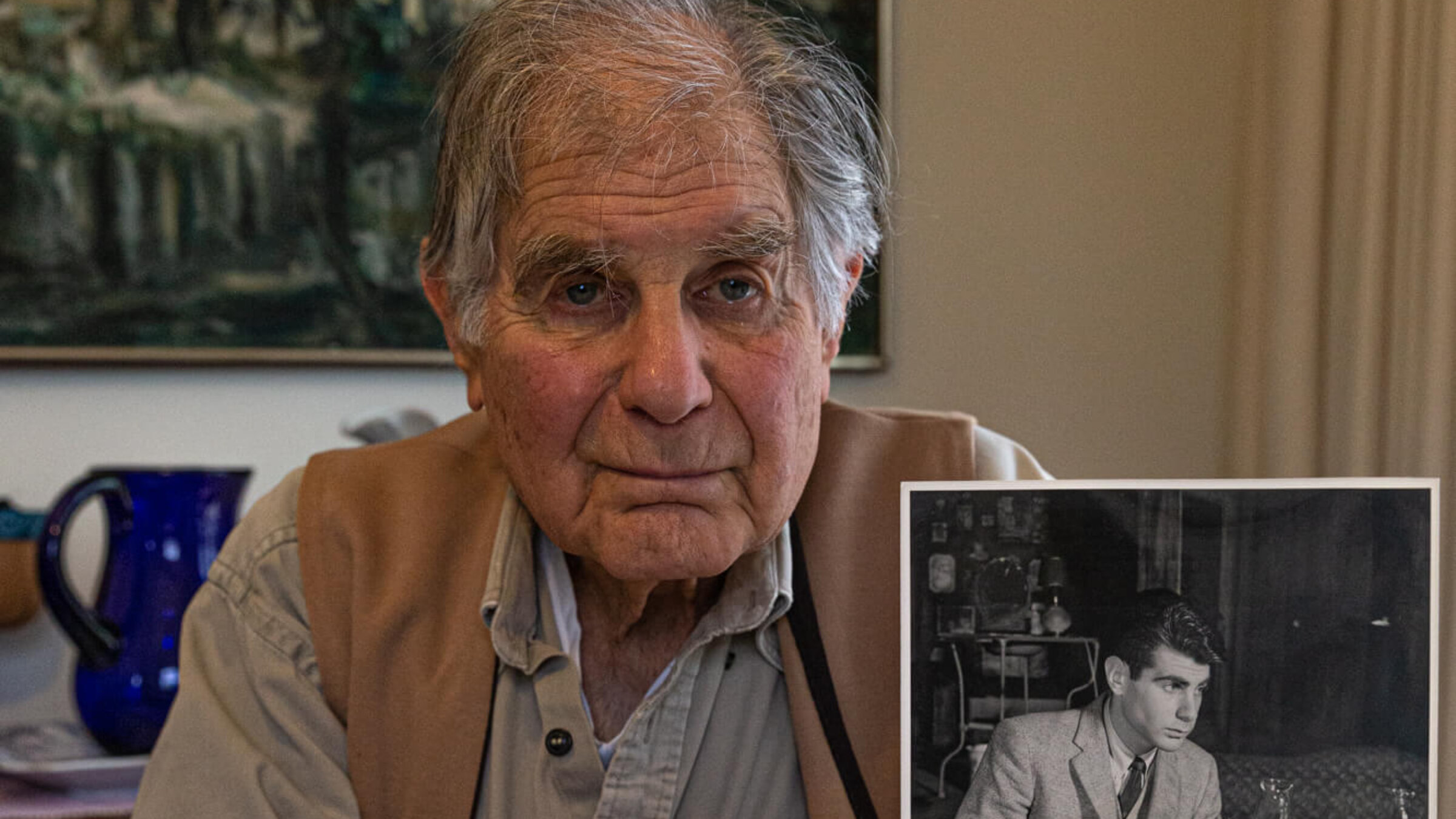
Steve Press played the role of Peter Van Daan on Broadway, on the national tour, and on the bus-and-truck tour. He also was charged with the responsibility of taking care of Mouschi the cat. Photo by Matthew Litman
Editor’s Note: This article is one in a series we’re publishing in conjunction with Playing Anne Frank, our podcast about how The Diary of Anne Frank changed the lives of the people who brought it to Broadway, Hollywood, and the rest of the world. Other articles in the series can be found here and here.
By 1957, The Diary of Anne Frank had become an international phenomenon. The Tony Awards had named it best play in 1956. So had the New York Drama Critics’ Circle and the National Drama Critics’ Poll. It won the Pulitzer Prize for drama. The show had run for 90 weeks on Broadway and, according to press rep Arthur Brilant, “virtually every civilized country on the face of the globe” had produced it, including 90 cities in Germany alone. Plans for the Hollywood movie adaptation were well underway.
Something that isn’t known quite so well and that I discovered while researching my podcast series Playing Anne Frank is how The Diary of Anne Frank made its way across the U.S. and Canada and became an early form of Holocaust education. The production that played the Cort Theatre and the Ambassador was the one that won all the prizes, but the one that audiences saw in Beaumont, Texas, and Emporia, Kansas, was just as significant.
For about a year, starting in the spring of 1957, The Diary of Anne Frank toured major American cities, such as Los Angeles, San Francisco, Salt Lake City and Chicago. Joseph Schildkraut reprised the role of Otto Frank that he’d played on Broadway.
“My education was the play,” said Renee Pessin, who’d taken over the role of Margot Frank on Broadway and played Margot on the national tour. “It was a very emotional tour. We cared about what we were doing. We cared about what it represented to so many people. It broke my heart — because of all that I learned from being in The Diary and from talking to people that we met while on tour, people that knew more about the history than I did.”
“It was a really strange period in the ‘50s. The concentration camps were being opened and researched. It was quite an extraordinary time for the whole culture,” said Steve Press, who played Peter Van Daan on Broadway and on the national tour. “I thought it was amazing. And when they offered me the part, I said absolutely that I would. I just couldn’t say no.”
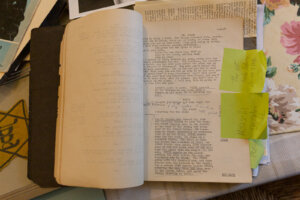
The national tour concluded in May 1958, at the National Theatre in Washington, D.C., where the Evening Star called it “a fine and moving play.” But that wasn’t the end of the show’s dramatic life. The creative team saw an opportunity to bring The Diary to the rest of the country — in particular to smaller towns where people might not have known much about Jewish history or the Holocaust.
Steve Press remembers the show’s producer Kermit Bloomgarden telling him, “We want to go south.”
So, a production team led by Bloomgarden and director Kip Good, who’d worked on a number of plays with the show’s original director Garson Kanin, began organizing what would become known as “the bus and truck tour.” It would use the story of Anne Frank to teach America about the Holocaust.
Schildkraut was preparing to star in the movie version that George Stevens was directing, so Otto Frank would be played by Francis Lederer, a Prague-born theater and film actor who’d most recently performed on stage opposite Shirley MacLaine in The Sleeping Prince.
Lilia Skala would play Anne’s mother Edith Frank. Skala had been a star actress in Vienna, but after her husband had been arrested by the Nazis, then escaped to Belgium, she took her sons to London. The family reunited in 1939 in New York, where her husband worked as a cap manufacturer while she did odd jobs and took English classes. By 1950, her language skills were good enough for her to appear on Broadway with Ethel Merman in Call Me Madam.
The Diary of Anne Frank’s grueling and ambitious three-month, 100-city tour itinerary seems to have more in common with a modern-day rock ‘n’ roll tour than a production of a deadly serious 10-character drama about the Holocaust. The cast rehearsed for about a week at the Majestic Theatre on West 44th Street and the Variety Arts Studios on West 46th, and then they met at Penn Station to catch a southbound train. The show opened in September 1958, with one-night stands in Norfolk and Lynchburg, Virginia. Then, it was on to West Virginia, Ohio, Iowa and Indiana.
When you look at the papers in Bloomgarden’s archives, you get some impression of the complications involved in producing a tour of this magnitude — streamlining the set to make it easier to break down and reassemble; consulting Allied Van Lines and Wolverine Movers to arrange for trucks to accommodate the cast, crew, and set; making sure copies of Anne Frank’s diary would be available and for sale at every venue; negotiating salaries with unions including Actors’ Equity (Francis Lederer would be making $1,250 a week; Steve Press, $150); working with local theater guilds to add The Diary of Anne Frank to a subscription series that would also include Li’l Abner and Auntie Mame.
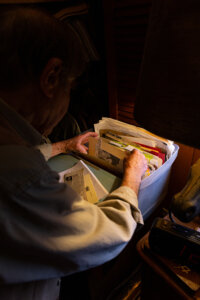
“It was an amazing tour and it was exhausting,” Press said. “Those poor stagehands would load up the set, the original set that we used on Broadway, they would load it up in their trucks and they would drive all night and set up in the next town. It was one town, then onto the next; we toured and toured.”
“Kermit Bloomgarden had the courage to send it to the Deep South, to places which hadn’t seen anything of interest in years,” Pauline Hahn, who played Anne Frank on the bus and truck tour, told me. “He knew he had a vehicle that would attract people.”
“This was no small undertaking,” Press wrote in the March/April 2007 issue of Congress Monthly. “It was 1958. There was great division in America. And Kermit wanted to send a ‘freedom’ bus out into an angry part of the country.”
Though there was some trepidation among the cast about telling a Jewish story in cities and towns that were violently opposing school desegregation and other civil rights causes, praise for the production was effusive. “Pauline Hahn has easily surpassed Miss Susan Strasberg’s New York stage role as Anne,” said the Star Courier in Bloomington, Indiana. “The cast is new but it is of the finest caliber and one Broadway could accept without question,” Frank Schmidt wrote for TheSouth Bend Tribune.
What was most impressive was the audience reaction. Even though many people were hearing this story for the first time, it resonated — the same way it had on Broadway, maybe even more so.
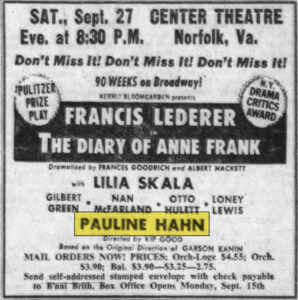
“When we would come out for the curtain call, all those young people were waiting for us and they wanted our autographs. We were rock stars,” Press said. “Some of the communities we went to, there were no Jewish populations whatsoever. We were really introducing a whole new world to these people, people who had never met a Jew in their lives, didn’t know anything about Judaism, didn’t know anything about the Holocaust.”
The tour wrapped up in mid-December 1958, at Ovens Auditorium in Charlotte, North Carolina. “A good set plus top-notch acting combined to make the production a solid success,” wrote Dick Banks in The Charlotte News.
The set and props were donated to the Charlotte Opera Association and the cast went home — some to California, some to New York.
“It was sad that this beautiful experience had ended,” said Hahn. “But I think a lot of the cast was happy to get home for Christmas.”
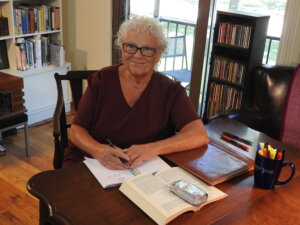
Press and Hahn both went on to careers in academia. Hahn did her Ph.D. on Hallie Flanagan and the Federal Theatre Project and taught acting and dramatic literature at Vassar and the Hebrew University of Jerusalem. Press became a theater professor at Dutchess Community College and directed an off-Broadway production of The Diary of Anne Frank with the St. Bart’s Players in 2004. But for both, that brief period in 1958 when they taught Anne Frank’s story to America remains a high point of their professional and creative lives.
“It was so important what we did by going out on that tour,” Steve Press told me. “Bringing this amazing story and this amazing person, Anne Frank, to the world. And after the bus and truck tour, it never stopped. And you know where it is today — it’s required reading; millions read it. It is one of the most published books in the whole world and it is one of the most produced plays in the whole world. I’m very pleased and very proud of what we did.”
A message from our Publisher & CEO Rachel Fishman Feddersen

I hope you appreciated this article. Before you go, I’d like to ask you to please support the Forward’s award-winning, nonprofit journalism so that we can be prepared for whatever news 2025 brings.
At a time when other newsrooms are closing or cutting back, the Forward has removed its paywall and invested additional resources to report on the ground from Israel and around the U.S. on the impact of the war, rising antisemitism and polarized discourse.
Readers like you make it all possible. Support our work by becoming a Forward Member and connect with our journalism and your community.
— Rachel Fishman Feddersen, Publisher and CEO






























